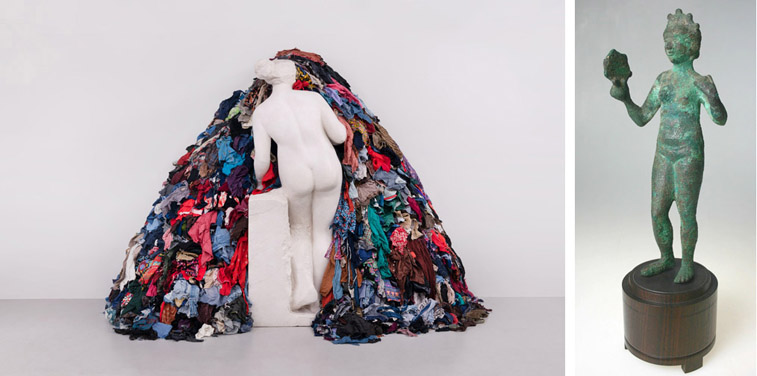Venus of the Rags
The Venus by Michelangelo Pistoletto (Biella, 1933) stands among a pile of discarded rags. Venus is the classic symbol of eternal beauty. The subject is common within Western art history but Pistoletto makes her out of synthetic resin. His Venus seems to belong in a garden centre rather than a museum.
Consumer society
In contrast to the classical figure, the motley collection of rags denotes a raw reality of pollution, poverty and social decline. Beauty and decay, the classical and the contemporary, the eternal and the everyday all converge here. This is Pistoletto's commentary on our modern consumer society. His Venus remains standing among the accumulated rubbish of contemporary society that towers over her head. She turns her back on us but at the same time holds a mirror up to us.
Mirror
The mirror has traditionally been one of the attributes of Venus, the goddess of love. The small bronze Aphrodite, the Greek name for the same goddess, also holds one. The mirror refers to the vanity of the beautiful goddess admiring her own reflection. Pistoletto plays with this idea in his Venus of the Rags. It is not the beauty of Venus but our modern society that is under scrutiny here.
Photos: Michelangelo Pistoletto (1933), Venere degli stracci (Venus od the Rags), 1967/1982 / unknown creator, Greece, Aphrodite with a Mirror, 2nd century AD.

